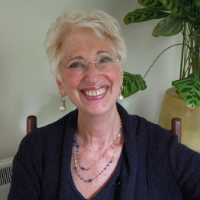Muscles Matter – The Science Of Aging Gracefully
Aging is an inevitable part of life but, the way we age might be more in our control than we think. Muscular weakness has long been associated with a decline in overall health as we age but muscular strength has the power to reverse it.
A recent study of 1275 older adults has shed new light on the relationship between muscular strength and aging. ¹ The intriguing findings suggest that maintaining strong muscles may be vital to slowing down the biological aging process.
The link between muscular weakness and aging
The researchers state, “There is a large body of evidence linking muscular weakness, as determined by low grip strength, to a host of negative aging-related health outcomes. Given these links, grip strength has been labeled a ‘biomarker of aging.”
When most people think of aging, they consider it in terms of the number of years they have lived, also known as their chronological age. However biological aging, which refers to the changes that occur in our bodies over time can be different from chronological age.
Biological age is a more meaningful measure of aging as it is modifiable and varies from person to person. By measuring biological age, we can gain insights into disease risk and overall health.
How do we measure biological age?
Scientists have recently developed epigenetic clocks to give you an idea of your body’s biological age. For example, imagine we are studying identical twins who were both 40 years old, but one was overweight, never exercised, drank excessively, and had a history of high stress. By contrast, the other ate well, managed stress, and had a regular exercise regime; an epigenetic clock should be able to look at the DNA of the ‘hard living’ twin and notice that their body had aged faster than the other.
How do they do that?
These clocks analyze patterns of DNA methylation and by comparing an individual's DNA methylation pattern to a reference population, researchers can estimate their biological age. There are even clocks such as the PhenoAge clock, which have proven to be accurate predictors of remaining life expectancy and disease risk. To learn more about epigentic clocks check out my interview with the inventor of PhenoAge, Dr. Morgan Levine
here.
What does this have to do with grip strength?
Muscular weakness has been linked to various adverse outcomes associated with aging, like diabetes, cognitive decline (e.g., Alzheimer’s disease), and early all-cause mortality. What this study aimed to do was see if there was some connection between what the epigenetic clocks showed and what the grip strength test showed.
Not everyone has access to epigenetic testing so simply measuring grip strength would be a great proxy for this. What was remarkable is that they did discover that increasing muscular strength contributes to a slower pace of biological aging.
So what does this mean?
To me, it really underscores the importance of regular physical activity, including strength training, in our lives. This is important because nearly all my clients over 50 have no regular weight training routine. If they lift weights, they are usually 2-5 lbs, which is not enough.
Four key takeaways:
- Exercise for longevity: Incorporating strength training exercises into your fitness routine can be a powerful tool in promoting a longer, healthier life. If you don’t know how to do that, there are many resources for personal trainers on the internet as well as in person.
- Quality over quantity: The focus should not just be on adding years to your life but on adding life to your years. Strong muscles may contribute to a more active and independent lifestyle as you age. Do we stop playing because we get old, or do we get old because we stop playing?
- Preventative medicine: By taking steps to maintain and improve your muscular strength now, you can stave off age-related health issues in the future. Add to the bank now to help protect yourself in the future.
- Lifestyle medicine approach: Don’t forget that a balanced diet, mental stimulation, and social engagement are also important factors in healthy aging. A lifestyle approach to well-being is vital if you want help with lifestyle medicine.
Studies like this highlight the significant link between muscular strength and biological aging. Maintaining strong muscles appears to play a vital role in slowing down the aging process. If you want to age gracefully, keep active, and put healthspan into your lifespan then incorporating regular strength training into your daily life should be a key part of your future.

